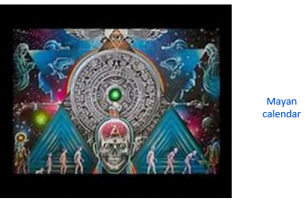By Manzanillo Sun Writer from the March 2014 Edition
On taking up the reins of government Montezuma had married this lady to one of his most illustrious servants, the governor of Tlatelulco, and after his death it would appear that she continued to exercise his almost vice regal functions and to reside in his palace. In course of time she died, and her obsequies were attended by the emperor in person, accompanied by the greatest personages of his court and kingdom. The body was interred in a subterranean vault of his own palace, in close proximity to the royal baths, which stood in a sequestered part of the extensive grounds surrounding the royal residence. The entrance to the vault was secured by a stone slab of moderate weight, and when the numerous ceremonies prescribed for the interment of a royal personage had been completed the emperor and his suite retired.
The following is taken from The Abbé Brasseur de Bourbourg as translated from the Codex Chimalpopoca, a work in Nahuatl dating from the latter part of the sixteenth century. One of the weirdest legends in Mexican tradition recounts how Papantzin, the sister of Montezuma II, returned from her tomb to prophesy to her royal brother concerning his doom and the fall of his empire at the hands of the Spaniards.
At daylight next morning one of the royal children, a little girl of some six years of age, having gone into the garden to seek her governess, espied the Princess Papan standing near the baths. The princess, who was her aunt, called to her, and requested her to bring her governess to her. The child did as she was bid, but her governess, thinking that imagination had played her a trick, paid little attention to what she said. As the child persisted in her statement, the governess at last followed her into the garden, where she saw Papan sitting on one of the steps of the baths. The sight of the supposed dead princess filled the woman with such terror that she fell down in a swoon. The child then went to her mother’s apartment, and detailed to her what had happened. She at once proceeded to the baths with two of her attendants, and at sight of Papan was also seized with affright. But the princess reassured her, and asked to be allowed to accompany her to her apartments, and that the entire affair should for the present be kept absolutely secret. Later in the day she sent for Tiçotzicatzin, her majordomo, and requested him to inform the emperor that she desired to speak with him immediately on matters of the greatest importance. The man, terrified, begged to be excused from the mission, and Papan then gave orders that her uncle Nezahualpilli, King of Tezcuco, should be communicated with. That monarch, on receiving her request that he should come to her, hastened to the palace. The princess begged him to see the emperor without loss of time and to entreat him to come to her at once. Montezuma heard his story with surprise mingled with doubt. Hastening to his sister, he cried as he approached her: “Is it indeed you, my sister, or some evil demon who has taken your likeness?” “It is I indeed, your Majesty,” she replied. Montezuma and the exalted personages who accompanied him then seated themselves, and a hush of expectation fell upon all as they were addressed by the princess in the following words:
“Listen attentively to what I am about to relate to you. You have seen me dead, buried, and now behold me alive again. By the authority of our ancestors, my brother, I am returned from the dwellings of the dead to prophesy to you certain things of prime importance.
“At the moment after death I found myself in a spacious valley, which appeared to have neither commencement nor end, and was surrounded by lofty mountains. Near the middle I came upon a road with many branching paths. By the side of the valley there flowed a river of considerable size, the waters of which ran with a loud noise. By the borders of this I saw a young man clothed in a long robe, fastened with a diamond, and shining like the sun, his visage bright as a star. On his forehead was a sign in the figure of a cross. He had wings, the feathers of which gave forth the most wonderful and glowing reflections and colours. His eyes were as emeralds, and his glance was modest. He was fair, of beautiful aspect and imposing presence. He took me by the hand and said: ‘Come hither. It is not yet time for you to cross the river. You possess the love of God, which is greater than you know or can comprehend.’ He then conducted me through the valley, where I espied many heads and bones of dead men. I then beheld a number of black folk, horned, and with the feet of deer. They were engaged in building a house, which was nearly completed Turning toward the east for a space, I beheld on the waters of the river a vast number of ships manned by a great host of men dressed differently from ourselves. Their eyes were of a clear grey, their complexions ruddy, they carried banners and ensigns in their hands and wore helmets on their heads. They called themselves ‘Sons of the Sun.’ The youth who conducted me and caused me to see all these things said that it was not yet the will of the gods that I should cross the river, but that I was to be reserved to behold the future with my own eyes, and to enjoy the benefits of the faith which these strangers brought with them; that the bones I beheld on the plain were those of my countrymen who had died in ignorance of that faith, and had consequently suffered great torments; that the house being built by the black folk was an edifice prepared for those who would fall in battle with the seafaring strangers whom I had seen; and that I was destined to return to my compatriots to tell them of the true faith, and to announce to them what I had seen that they might profit thereby.”
Montezuma hearkened to these matters in silence, and felt greatly troubled. He left his sister’s presence without a word, and, regaining his own apartments, plunged into melancholy thoughts.
Papantzin’s resurrection is one of the best authenticated incidents in Mexican history, and it is a curious fact that on the arrival of the Spanish Conquistadores one of the first persons to embrace Christianity and receive baptism at their hands was the Princess Papan.
Download the full edition or view it online
Manzanillo Sun’s eMagazine written by local authors about living in Manzanillo and Mexico, since 2009




